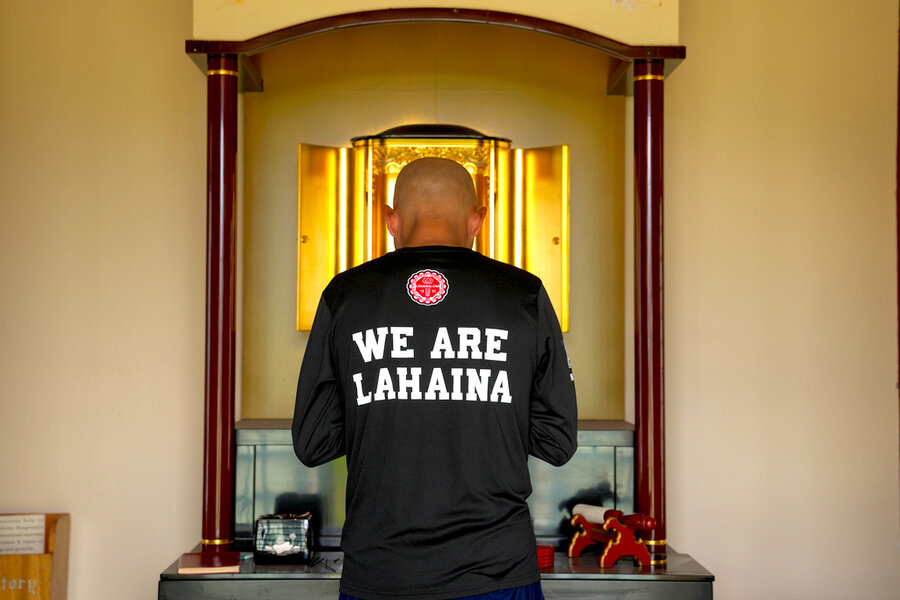A light for postwar Gaza, Israel
Loading...
Those making plans for restoring postwar Gaza, as well as Israeli border communities destroyed in the Oct. 7 attack, do not need to look long for ideas. After many wars and disasters, people have created opportunities for recovery, shifting the focus from what was lost to what might better reflect a society’s values.
The most relevant model might be Lahaina in Hawaii. The coastal town on the island of Maui was leveled by a wildfire last August, leaving its people dispersed and many structures destroyed. While Gaza is shaped by complex land security issues between two historically divided peoples, for residents of Lahaina, rebuilding raises concerns that Palestinians would find familiar. They seek to preserve their community from dislocation and decisions made by more powerful outside interests.
A bill working its way through the Hawaii Senate sets out this goal: “There is an opportunity to rebuild Lahaina by preserving and reintroducing its valued resources in a manner that reflects the values and priorities of its residents and businesses, and addresses future challenges, including climate change and affordable housing.”
That aspiration reflects local sentiment. Although residents remain mostly scattered, they speak of the rebuilding of their town in biblical terms of resurrection and redemption. The work of protecting property and restoring economic activity starts with establishing joy and unity. They see the fire’s devastation as a call to knit the community and government more closely together and rethink the uses of the local environment, which had been altered over the past century by commercial agriculture.
“The biggest part we’re learning through this process of rebuild is that [every stance or opinion] should also be equal in encouragement,” Kaliko Storer, a Maui community advocate, told Island News in December. “It’s not the different things we do, but it’s the heart in which we do [it]. If the heart is in the right place for the right reasons, supply and provision [follow].”
The Senate bill acknowledges the principle of letting the community lead. It would establish a board composed of nine local residents to oversee $100 million in state matching funds for rebuilding projects that they determine. That marks a shift away from the way the state manages other local administrative boards. Its purpose, one senator told West Hawaii Today, is to give the people of Lahaina “liquidity and agency” to rebuild deliberately, reflecting local values.
Restoring communities by restoring community has worked elsewhere. Following the 2020 earthquakes in İzmir, Turkey, residents formed housing co-ops in collaboration with the local municipality to ensure that new housing reflected their needs and concerns.
“We didn’t know our neighbours before we initiated the co-operative effort,” one resident told The Conversation earlier this month. “But now, we design and build our homes together and try to make our neighbourhood more liveable.” That process has strengthened local self-government, seeding collaboration between residents, local universities, and professional associations on issues such as civil rights.
“There’s always a chance to new birth of something even better,” Kuhio Lewis, CEO at the Council for Native Hawaiian Advancement, told Island News. “But it has to be from the people’s perspective.” The post-disaster resilience in Lahaina shines a light for postwar restoration in Gaza and Israel.







